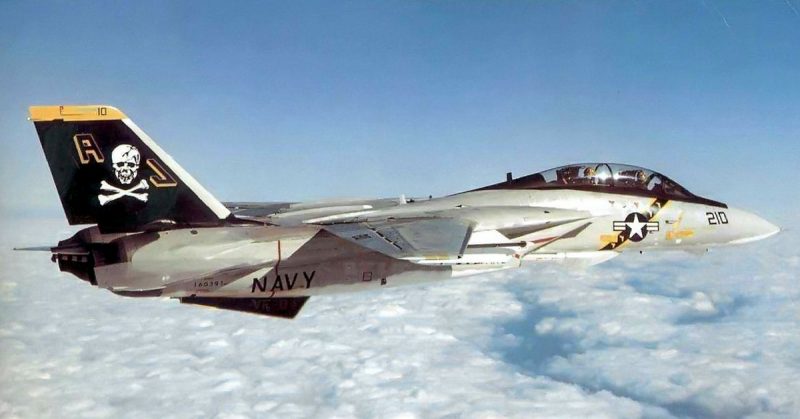Across the course of the 20th century, the Grumman company provided the United States Navy with some of its most successful fighter planes.
FF-1
Grumman’s first naval fighter, the FF-1 was a two-seater biplane that entered service in April 1933. Many biplanes were made of canvas over frames, but the FF-1 was an all-metal machine.
Its top speed of 195mph made it faster than the standard US Navy fighter of the time, the Boeing F4B, and so the Navy was keen to take it up. A Canadian-built version served in Canada, Japan, Nicaragua, and Spain.
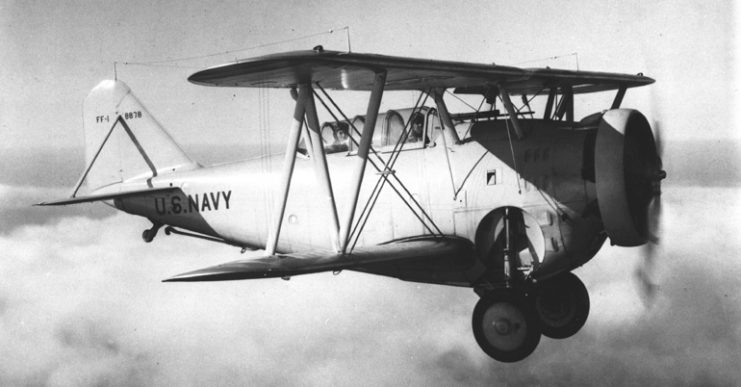
F2F-1
Based on the success of the FF-1, Grumman started developing a lighter single-seat fighter called the F2F-1. This had an improved top speed of 238mph but suffered from some directional instability. From 1935, it replaced the Boeing F4B, and it saw front-line service until September 1940. After that, it was used as a training plane.
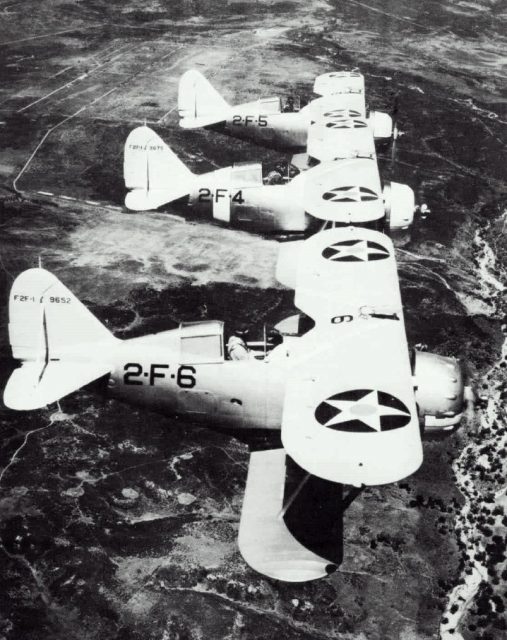
F3F-1
The F3F-1 got off to a bad start. The first two prototypes both crashed during testing in the spring of 1935, killing one of the test pilots. Despite this, the designers persisted. The plane they produced was a better version of the F2F-1, with aerodynamic improvements as well as longer wings and fuselage. It saw use aboard two carriers and as a Marine Corps plane.
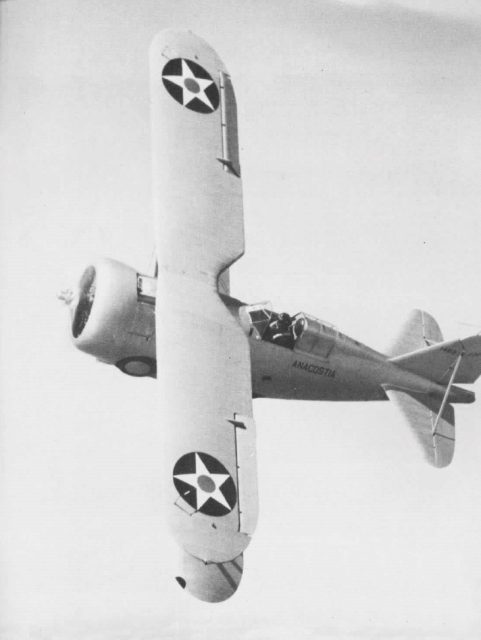
F4F Wildcat
Originally designed as another biplane, the F4F was redesigned in 1936 as Grumman’s first naval monoplane. By the time America entered the Second World War, it was the most common fighter on American aircraft carriers, and so saw widespread use in the Pacific campaign.
With its self-sealing fuel tank and armored exterior, the Wildcat was a tough plane. It also had good speed and maneuverability, though it often struggled against Japanese Zeros.
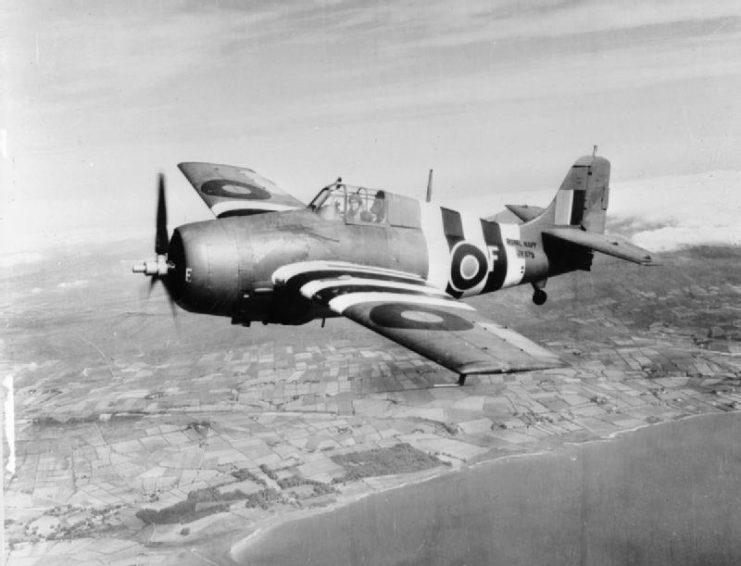
F6F Hellcat
The Wildcat’s successor, the Hellcat became America’s most successful combat fighter, with a kill-to-loss ratio of over nineteen to one. 307 pilots became aces by shooting down five or more opponents in a Hellcat. Tough, fast, and effective at both high and low altitudes, the Hellcat dominated the skies over the Pacific from the moment it entered the fray in August 1943.
It was used in Europe and the Mediterranean by the British and sold to various other countries after the war. Hellcats were still in service in South America in the early 1960s.
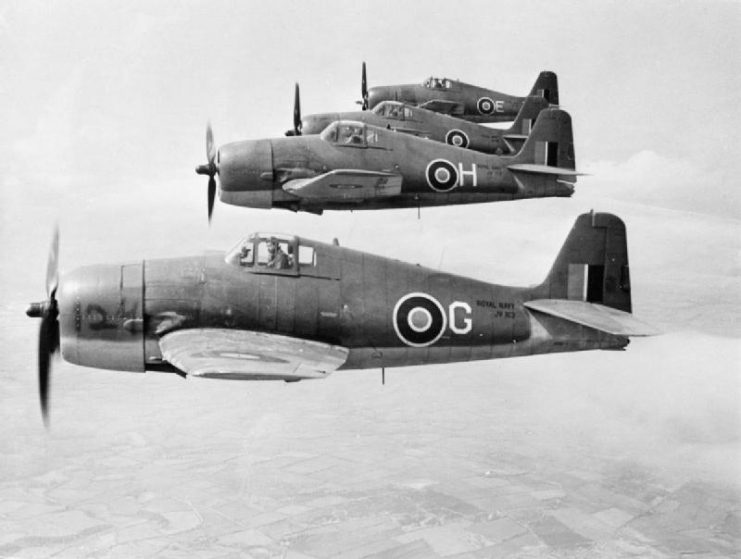
F7F Tigercat
Designed to serve on Midway class carriers, the Tigercat was an unusual twin rotary engine fighter. Heavier and faster than the existing American carrier planes, it excited the US Marine Corps, who ordered 500 before the first prototype even flew.
But it took so long to produce and approve that it never saw action in World War Two, despite first being delivered to the Navy in April 1944. Adapted as a night fighter, it saw service in the Korean War. Only the US Marines ever used it.
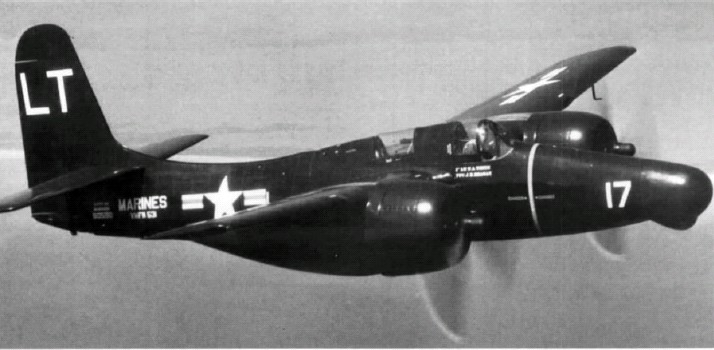
F8F Bearcat
A product of the accelerated pace of development in World War Two, the Bearcat had its first test flight in August 1944 and started reaching the navy only six months later. 20% lighter than the Hellcat and with a 30% better rate of climb, it performed extremely well in tests, even outperforming some of the first jet fighters.
But by the time it reached the front lines, the war was nearly over, and so the Bearcat never saw action. Production continued until 1949, but by then the age of the jet engine had arrived and a new line of planes took over.
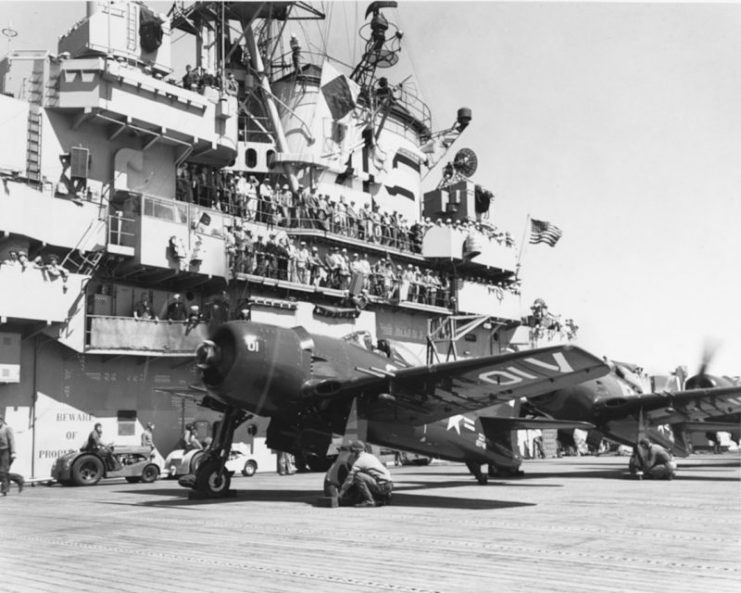
F9F Panther
Grumman’s first navy jet fighter, the F9F Panther began to take shape as a design late in the Second World War. The power of the available engines led to an impractical four-engine design, which was refined by 1947 into a single-engine straight-wing jet.
It completed carrier trials in March 1949 and reached units two months later. In the Korean War, it was the Navy’s most common fighter jet, scoring successes both in the air against MiGs and as a ground-attack plane.
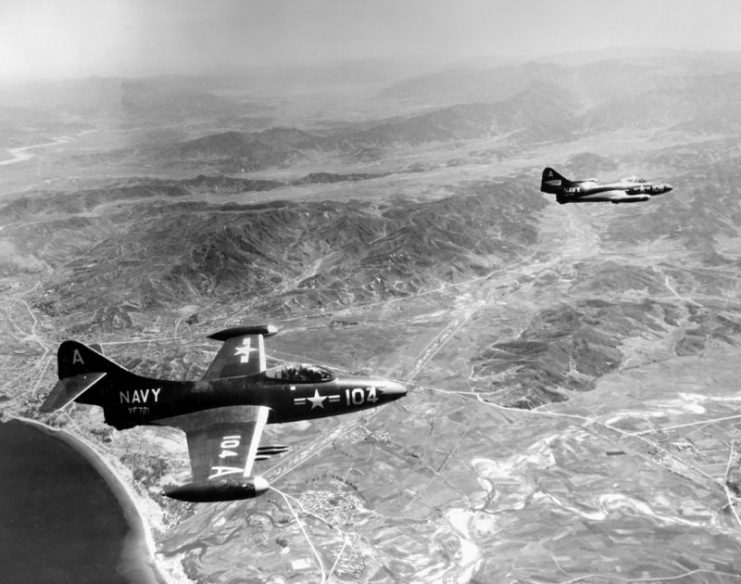
F9F Cougar
Originally designed as a swept-wing version of the Panther, the Cougar kept little from its predecessor – only the forward fuselage. Its J48-8 engine and aerodynamic design gave it greater speed than the Panther, reaching 647mph over the Panther’s 545mph.
In January 1954, a version with enlarged wings broke the sound barrier while in a shallow dive. This version, the F9F-8, also carried early model Sidewinder air-to-air missiles.
Having first entered service in 1952, the Cougar continued in use, first as a combat fighter and then as a target drone and training plane, until the middle of the 1970s.
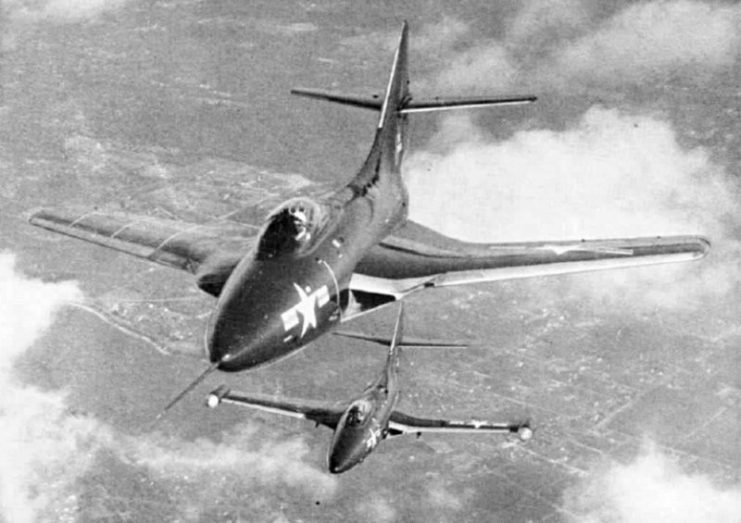
F11F Tiger
Intended as a successor to the F9Fs, the Tiger was plagued throughout its career by engine problems. The navy was looking for planes that could exceed the speed of sound, but the original engine didn’t have the power. An afterburner version of the engine was put forward, but this didn’t work as the designers wanted, and so the Tiger entered service in March 1957 with less impressive engines than it was designed for.
Despite this, it had several advantages. Small and light, its short wings removed the need for complex folding gear to fit onto carriers. Well-armed with Sidewinders and cannons, the Tiger was popular with pilots, who found it pleasant to fly.
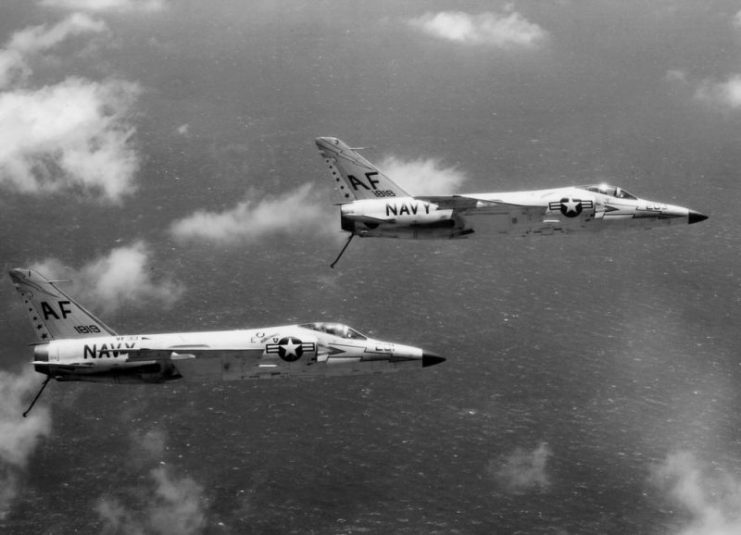
F-14 Tomcat
Introduced in the early 1970s, the Tomcat was a remarkably successful interceptor that remained one of the world’s most powerful fighters for thirty years. Its wings could be adjusted to different configurations for slow- or high-speed flight. Its range of weapons let it take on enemy planes up to 100 miles away.
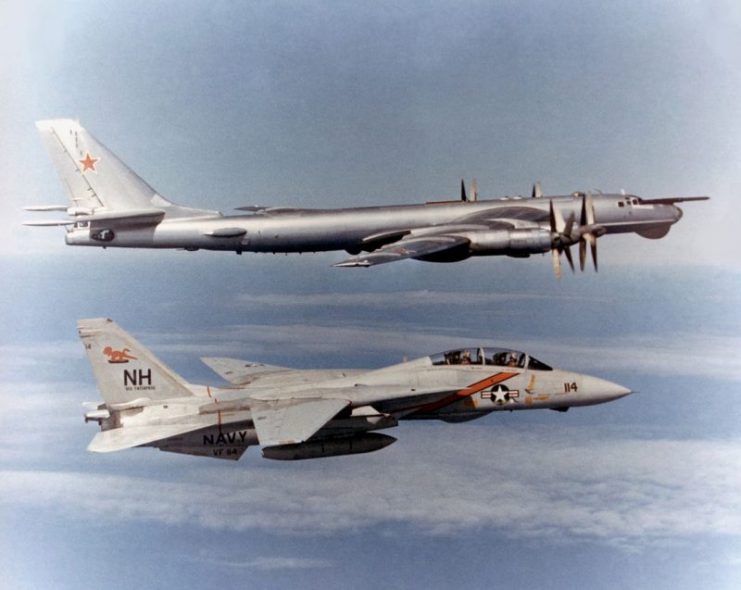
Designed as an interceptor, the Tomcat was used in this role in the First Gulf War in 1991. In 1995, it was used in a new bombing role in Bosnia. It became famous from the 1980s onwards after it was featured in the film Top Gun.
